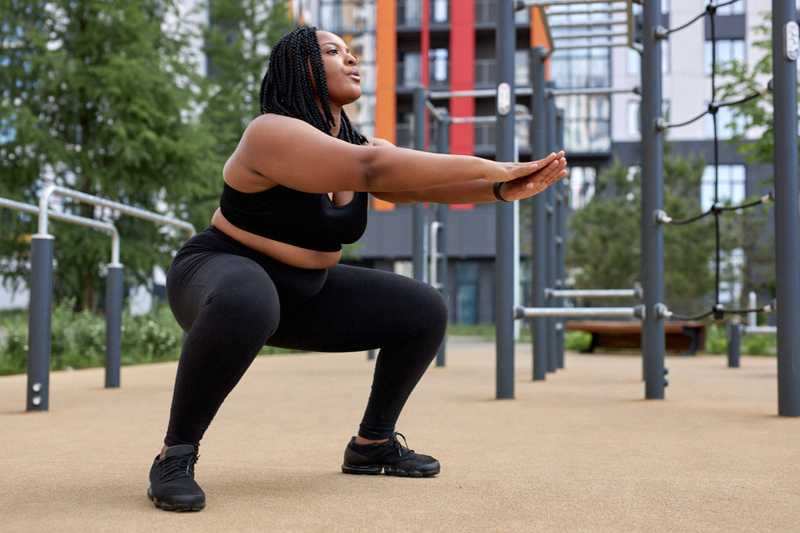The fourth trimester is a time of great change for both mother and baby. For mothers, it is a time of physical healing and adjusting to the demands of a new baby. For babies, it's a time of growth and development in a world outside the womb. This transitional period — and all the aches and pain that come with it — can be made easier with the help of postpartum care.
In this blog post, we will discuss what to expect during the fourth trimester and how postpartum physical therapy can help reduce pain, reconnect to your pelvic floor and optimize healing of your abdominal wall and pelvic ligaments.
Table of Contents
- What is the Fourth Trimester?
- How to Navigate the 4th Trimester
- What are the Benefits of Postpartum Physical Therapy?
- Common Postpartum Concerns
- What to Expect from Postpartum PT
- How Can Physical Therapy Help Me Postpartum?
- How Long Does it Take to Recover Postpartum?
- Getting Back to Physical Activity After Childbirth
- Can't I Just Do Kegels to Recover Postpartum?
- Time to Care of Yourself
What is the Fourth Trimester?
The fourth trimester is the period of time from childbirth until twelve weeks postpartum. This time is marked by great physical and hormonal changes for the mother as her body heals and readjusts to life outside of pregnancy.
The fourth trimester can be a difficult time for many mothers, as they deal with the aches and pains that come with the healing process while also learning to manage the demands of a newborn. This time can also lead to significant mental health challenges due to stress, sleep deprivation, and hormone changes.
Postpartum recovery will typically last far beyond the 4th trimester. In fact, a new mom's body will continue to change and heal for at least a year.
The 4th trimester is a time when support is key for a successful transition to motherhood. Many women feel isolated and unsupported during this time. Postpartum physical therapy can provide the support and guidance needed to navigate the fourth trimester successfully.
Other providers that can give postpartum guidance and support are:
- Doulas
- Lactation Consultants
- Mental Health Professionals
- Your OB/GYN
Plus, don't underestimate the help and support of family, friends, and neighbors. New moms should take all the help they can get. Or if no one is stepping up, they should simply ask!
How to Navigate the 4th Trimester
There are many ways to navigate the fourth trimester, but one of the most important factors is to be patient with your body as it heals. It is common for mothers to experience aches and pains during this time from the aftermath of childbirth to the emotional rollercoaster of new parenthood.
The Essentials for a Full Postpartum Recovery
Let's review:
- Rest: When possible, get some sleep. It may not be in long stretches, but any bit helps. This also means prioritizing rest and baby time, so feel free to say no to all those visitors eager to hold the baby (unless they want to come to cook and clean while you nap!).
- Eat well: A healthy diet will help your body heal and give you the energy you need to care for a newborn.
- Drink plenty of water: Staying hydrated will help your body heal and prevent constipation (a common postpartum complaint).
- Take your time: Don't push yourself too hard. Give your body the time it needs to recover.
- Move your body gently: What can be done in the first weeks of postpartum will depend on each woman. If you're up for it, some gentle movement can feel great on the body — such as yoga or a short walk. Use your symptoms and bleeding as a guide for when to rest or modify.
- Work with a postpartum physical therapist: A pelvic floor physical therapist can help you heal your body and prevent long-term problems.
If you're struggling in the fourth trimester, know that you are not alone. Postpartum physical therapy can help ease the aches and pains of this transitional period, and get you on the road to a full recovery.1
What are the Benefits of Postpartum Physical Therapy?
There are many benefits to postpartum physical therapy. For mothers, postpartum physical therapy can help:
- Reduce pain
- Heal the pelvic floor
- Improve recovery time
- Restore core strength and stability
- Improve sexual function (when cleared)
- Prevent complications from diastasis recti
- Feel in control of your entire recovery process
Additionally, postpartum physical therapy can help reduce the risk of developing more serious complications, such as pelvic organ prolapse (when an organ changes position and bulges into the vagina) or incontinence (lack of urinary control).
You do not need a referral to start seeing a women's health physical therapist. You can even schedule an appointment with a CityPT specialist from the comfort of your own home today.
Common Postpartum Concerns
During the fourth trimester postpartum period and beyond, many mothers experience common concerns that can be addressed with physical therapy. These include:
- Low back pain
- Pelvic pain/vaginal pain
- Sacral/coccyx (tailbone) pain
- Pubic symphysis dysfunction
- Diastasis recti (abdominal separation)
- Pelvic floor muscle dysfunction
- Urinary incontinence
- Weakness of the pelvic floor muscles or other core muscles
- Constipation
- Sexual dysfunction
- Pelvic organ prolapse
- Scar tissue from a c-section or perineum tear
While some of these concerns, like low back pain and abdominal separation, are common during pregnancy. Others, like sexual dysfunction and urinary incontinence, can be new and unexpected. If you experience any of these concerns, be sure to talk to a pelvic floor specialist.
What to Expect from Postpartum PT
At your first appointment, your physical therapist will take a thorough history and perform a comprehensive evaluation. This will help them to understand your unique situation and create a personalized treatment plan to address your health concerns. A CityPT therapist will make sure to take your mental health and lifestyle habits into account when designing an effective recovery plan.
How Can Physical Therapy Help Me Postpartum?
There are many ways in which physical therapy can help you postpartum. Your therapist will likely:1
- Teach you how to properly support your body during activities of daily living and exercise. This is particularly helpful for all that time spent feeding your baby, whether it's from a bottle or breastfeeding.
- Prescribe specific exercises to help heal your pelvic floor, restore core strength, promote better mechanics with diastasis recti (separation of the abdominal muscles), and improve overall function.
- Use manual therapy techniques to address scars, tissue extensibility, and general tension in the pelvic floor muscles
- Educate you on how to effectively manage the pain of recovery and what to expect in each stage
Additionally, they will be a great resource for any questions or concerns you have about your postpartum recovery.
How Long Does it Take to Recover Postpartum?
Recovery times vary depending on the individual and the severity of their symptoms. In general, most women will start to see significant improvements within the first few weeks of physical therapy. However, some women may need several months (or even up to a year and beyond) to fully recover.
Postpartum recovery, with or without formal guidance, takes time and patience. The body continues to undergo significant changes for a year or more after giving birth, especially if you continue to breastfeed (due to hormonal changes). A physical therapist can be a great guide for navigating all these changes and helping you feel your best every step of the way.
Getting Back to Physical Activity After Childbirth
Here are some basic recovery tips for getting back to physical activity after childbirth:
- Start slowly with low-impact activities and increase intensity and duration as tolerated to gradually strengthen the core muscles/pelvic floor muscles.
- Avoid high-impact activities, such as running or contact sports, until cleared by your healthcare provider (OBGYN) and after you have been evaluated by a pelvic health physical therapist.
- Focus on rebuilding core strength and stability before progressing to more challenging exercises that address the entire musculoskeletal system.
- Avoid exercises that put excessive strain on the pelvic floor and abdomen, such as double leg lifts, crunches, or sit-ups.
- Drink plenty of water and listen to your body for signs of fatigue or pain.
Basic Postpartum Exercises to Try When You're Ready
- Breathe: Diaphragmatic breathing helps to engage the deep abdominal muscles and relax the pelvic floor. Being able to breathe properly is the first step to easing back into exercise.
- Kegels: Practice tightening and relaxing the pelvis, if tolerated. Strengthening your pelvic floor muscles can help with incontinence, bladder retention, sexual function, and prolapse.
- Cat/Cow: This gentle movement on your hands and knees helps to release tension in the low back and pelvis while also promoting healing blood flow to recovering tissues.
- Glute Bridges: A great first core exercise. Lie on your back with feet flat on the ground and knees bent. Squeeze your glutes to lift your hips off the ground, then slowly lower back down.
- Heel Slides: Start in a seated position on the floor with both legs extended in front of you. Slide one heel towards your butt, then return to the starting position. Repeat on the other side.
Never force an exercise that elicits pain or causes your abdominal muscles to cone in the front (like a pyramid) — as this can exacerbate diastasis recti. If you have any questions about how to safely return to physical activity after childbirth, be sure to ask for medical advice from your physical therapist.
Can't I Just Do Kegels to Recover Postpartum?
Kegels are great for a lot of things, but they're not always enough on their own to heal the pelvic floor after childbirth. The pelvic floor goes through a lot during pregnancy and childbirth and sometimes requires a little extra help to get back on the road the recovery.
Plus, some women will experience pelvic floor pain from too much muscle tension, known as a hypertonic pelvic floor,2 which can actually be exacerbated by Kegels.
Time to Care of Yourself
After having a baby, it's easy to push your own concerns under the rug and focus on what your baby needs. However, to be the best mom you can be and feel good, it's important to take care of yourself too.
If you're struggling with any sort of pelvic pain or dysfunction after childbirth, don't hesitate to reach out to a CityPT women's health physical therapist and book an appointment for help. They are there to support you on your journey to recovery!
Before you go, please read our disclaimer. This blog is intended for informational purposes only. We are not providing legal or medical advice and this blog does not create a provider-patient relationship. Do not rely on our blog (or any blog) for medical information. Always seek the help of a qualified medical professional who has assessed you and understands your condition.
References
Footnotes
-
Lawson, S. and Sacks, A. (2018), Pelvic Floor Physical Therapy and Women's Health Promotion. Journal of Midwifery & Women's Health, 63: 410-417. https://doi.org/10.1111/jmwh.12736 ↩ ↩2
-
Cleveland Clinic. Hypertonic Pelvic Floor: Symptoms, Causes, and Treatments. Accessed September 23, 2022. https://my.clevelandclinic.org/ ↩

JayDee Vykoukal is an author, holistic health coach, mom blogger, and passionate Doctor of Physical Therapy. She loves teaching healthy living, writing about motherhood, traveling and spending quality time with her family.

JayDee Vykoukal is an author, holistic health coach, mom blogger, and passionate Doctor of Physical Therapy. She loves teaching healthy living, writing about motherhood, traveling and spending quality time with her family.


